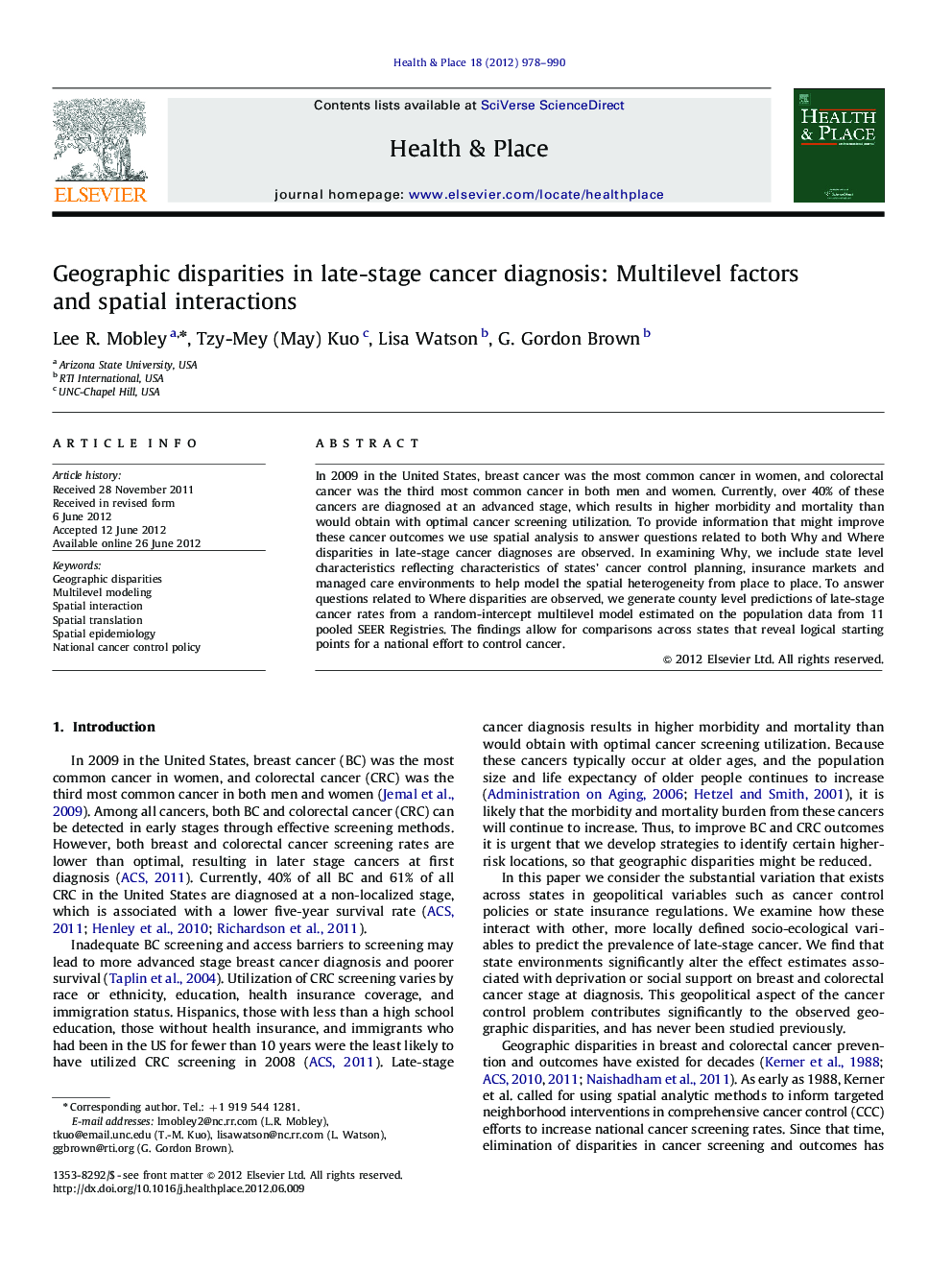| Article ID | Journal | Published Year | Pages | File Type |
|---|---|---|---|---|
| 10502623 | Health & Place | 2012 | 13 Pages |
Abstract
In 2009 in the United States, breast cancer was the most common cancer in women, and colorectal cancer was the third most common cancer in both men and women. Currently, over 40% of these cancers are diagnosed at an advanced stage, which results in higher morbidity and mortality than would obtain with optimal cancer screening utilization. To provide information that might improve these cancer outcomes we use spatial analysis to answer questions related to both Why and Where disparities in late-stage cancer diagnoses are observed. In examining Why, we include state level characteristics reflecting characteristics of states' cancer control planning, insurance markets and managed care environments to help model the spatial heterogeneity from place to place. To answer questions related to Where disparities are observed, we generate county level predictions of late-stage cancer rates from a random-intercept multilevel model estimated on the population data from 11 pooled SEER Registries. The findings allow for comparisons across states that reveal logical starting points for a national effort to control cancer.
Related Topics
Health Sciences
Medicine and Dentistry
Public Health and Health Policy
Authors
Lee R. Mobley, Tzy-Mey (May) Kuo, Lisa Watson, G. Gordon Brown,
